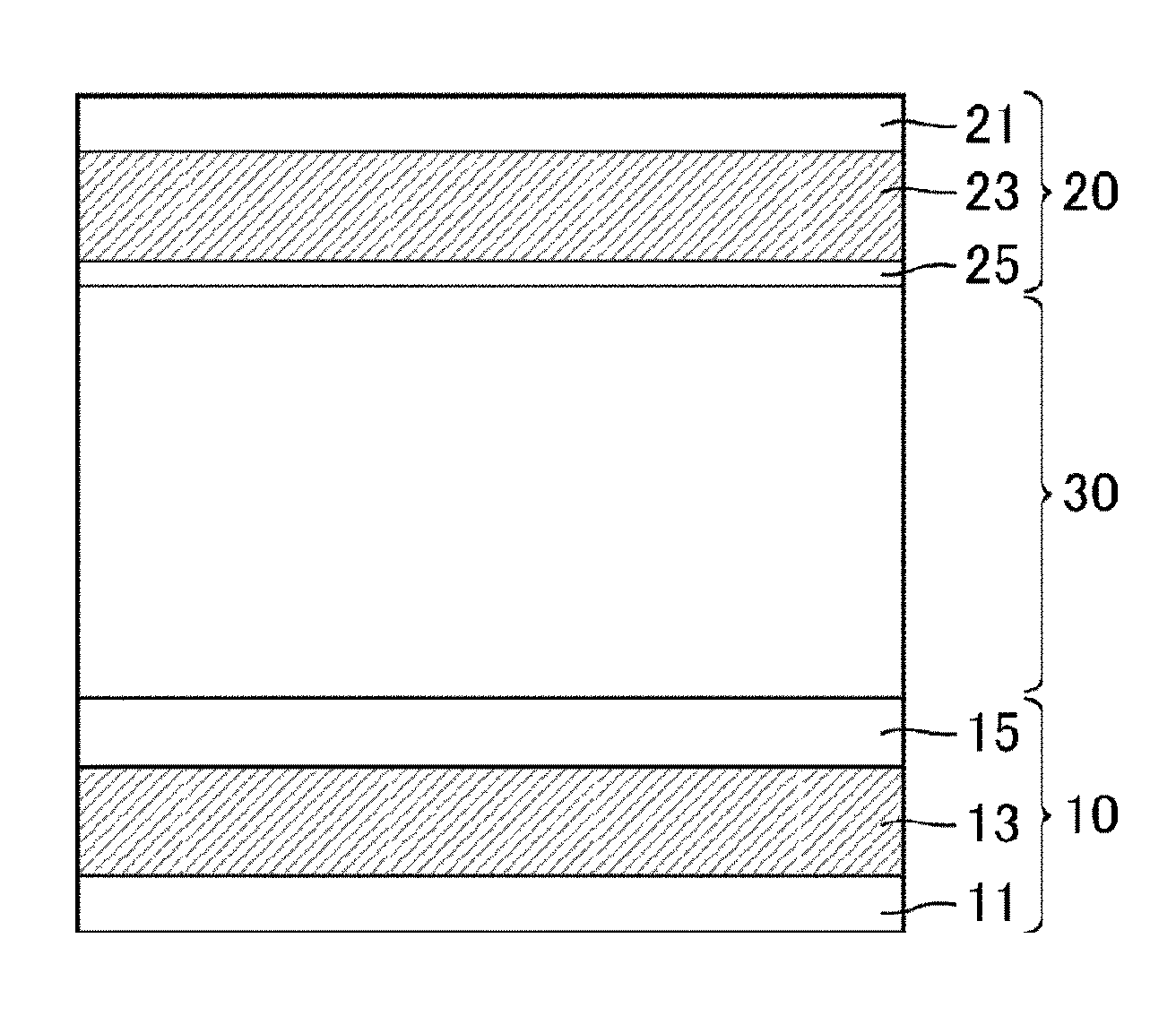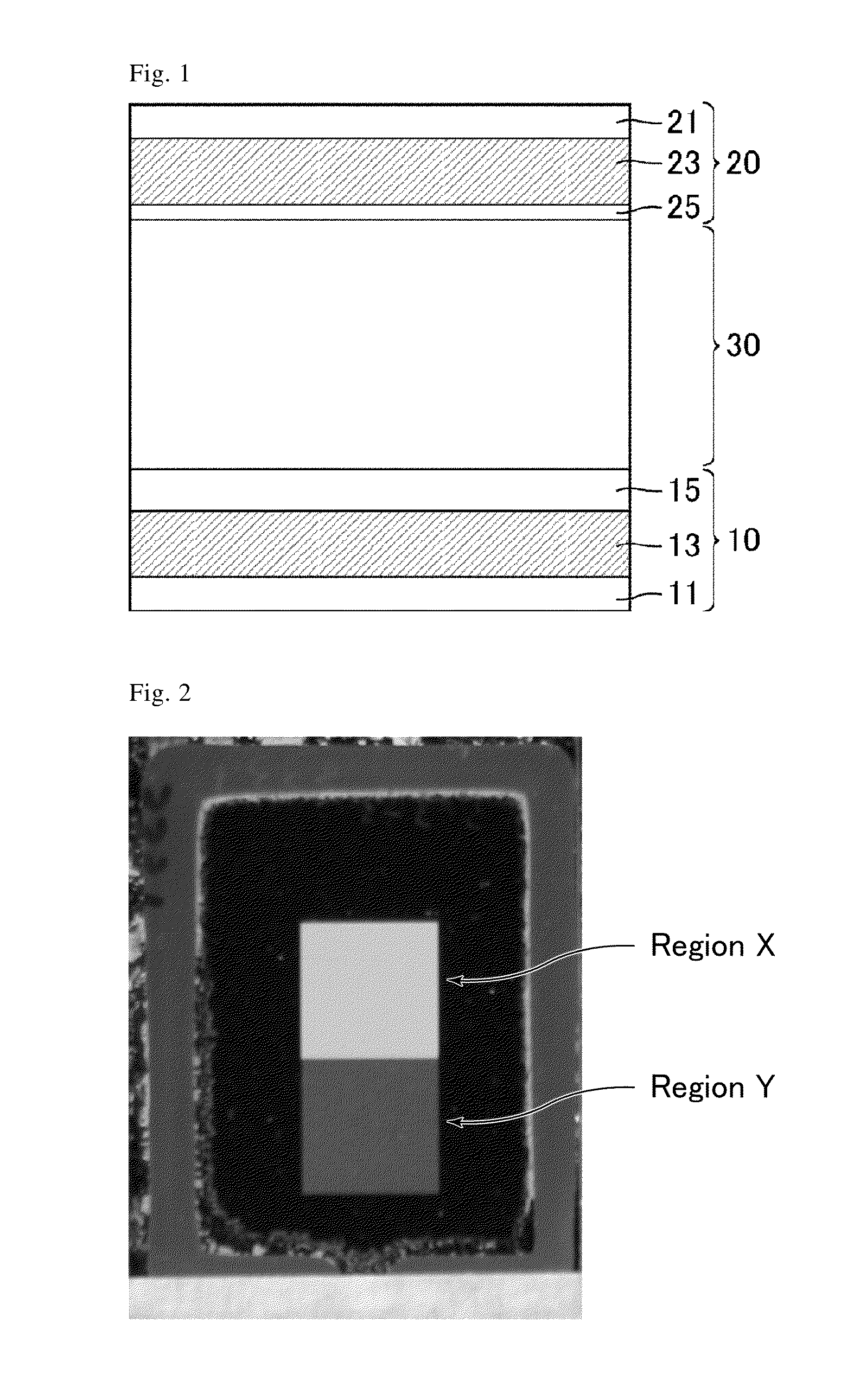Liquid crystal display device and method for manufacturing same
a technology of liquid crystal display and liquid crystal, which is applied in the direction of optics, instruments, electrical devices, etc., to achieve the effect of stable alignment and reduced image sticking
- Summary
- Abstract
- Description
- Claims
- Application Information
AI Technical Summary
Benefits of technology
Problems solved by technology
Method used
Image
Examples
embodiment 1
[0073]A liquid crystal display device of Embodiment 1 includes a liquid crystal cell in which the polymer layer of a substrate including an active element has a larger thickness, a higher density, or both of these than the polymer layer of a counter substrate. In Embodiment 1, the base film of the substrate including an active element is formed under film forming conditions different from those for the base film of the substrate different from the substrate including an active element. Specifically, the baking time of the base film of the substrate including an active element is longer than that of the counter substrate. For example, the base film of the counter substrate is preferably formed by baking a photoactive material for 20 to 60 minutes while the base film of the substrate including an active element is preferably formed by baking a photoactive material for 70 to 200 minutes. The difference in the baking time of the base film between the substrate including an active elemen...
example 1
[0108]FIG. 1 is a schematic cross-sectional view of a liquid crystal cell of Example 1.
[0109]As illustrated in FIG. 1, the liquid crystal cell of Example 1 includes a comb electrode substrate 10 as a substrate including an active element, a bare glass substrate 20 as a counter substrate facing to the comb electrode substrate 10, and a liquid crystal layer 30 sandwiched between a pair of substrates consisting of the comb electrode substrate 10 and the bare glass substrate 20. The comb electrode substrate 10 includes a transparent insulating substrate 11 made of glass, and, on the liquid crystal layer side of the transparent substrate 11, various wires, a pair of comb electrodes including pixel electrodes and a common electrode, and TFTs. The bare glass substrate 20 includes a transparent insulating substrate 21 made of a material such as glass, and, on the liquid crystal layer side of the transparent substrate 21, color filters and a black matrix.
[0110]In Example 1, a glass substrate...
example 2
[0133]FIG. 7 is a schematic cross-sectional view illustrating a liquid crystal cell of Example 2.
[0134]The liquid crystal cell of Example 2 was produced in the same manner as in Example 1 except that a bare glass substrate and a comb electrode substrate, to each of which a polyvinyl cinnamate solution prepared in the same manner as in Example 1 was applied, were temporarily baked at 90° C. for 1 minute; an alignment film 223 was then formed by baking the bare glass substrate at 230° C. for 40 minutes; and an alignment film 213 was formed by baking the comb electrode substrate at 230° C. for 180 minutes. A resulting polymer layer 215 of the comb electrode substrate 210 had a larger thickness, a higher density, or both of these than a simultaneously obtained polymer layer 225 of the bare glass substrate 220.
PUM
| Property | Measurement | Unit |
|---|---|---|
| transmittance | aaaaa | aaaaa |
| transmittance | aaaaa | aaaaa |
| temperature | aaaaa | aaaaa |
Abstract
Description
Claims
Application Information
 Login to View More
Login to View More - R&D
- Intellectual Property
- Life Sciences
- Materials
- Tech Scout
- Unparalleled Data Quality
- Higher Quality Content
- 60% Fewer Hallucinations
Browse by: Latest US Patents, China's latest patents, Technical Efficacy Thesaurus, Application Domain, Technology Topic, Popular Technical Reports.
© 2025 PatSnap. All rights reserved.Legal|Privacy policy|Modern Slavery Act Transparency Statement|Sitemap|About US| Contact US: help@patsnap.com



